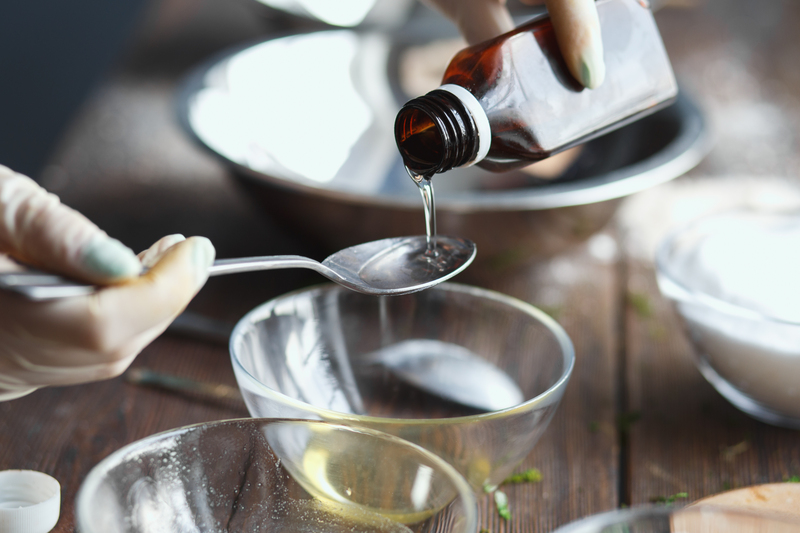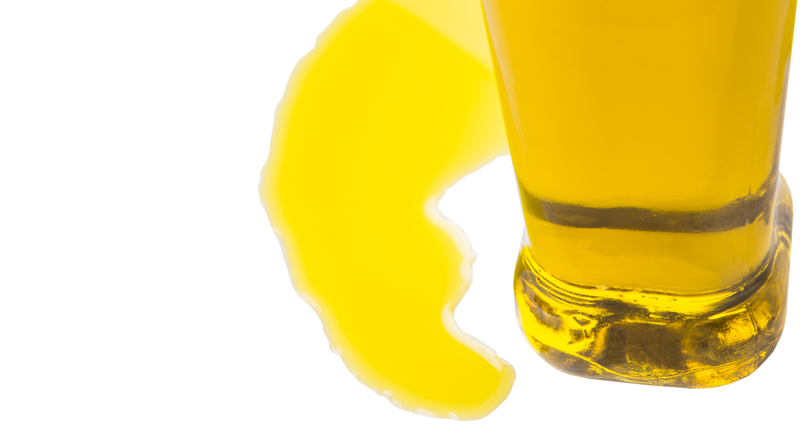Focus on Detail: Removing Mould from Window Sills Effortlessly
Posted on 28/06/2025
Focus on Detail: Removing Mould from Window Sills Effortlessly
Mould growth on window sills is a common issue in many homes, especially in areas with high humidity or poor ventilation. Not only is it unsightly, but it can also be hazardous to your health and cause lasting damage to your window fixtures. If you've noticed black, green, or even pink discolouration or a musty odour near your windows, it's likely that you're dealing with mould infestation. Don't worry--this comprehensive guide will show you exactly how to remove mould from window sills effortlessly and keep it from coming back.
Understanding Why Mould Grows on Window Sills
Before diving into mould removal methods, it's important to understand why window sills are especially susceptible to mould:
- Condensation: Windows are natural cold spots where humid indoor air meets cool glass, leading to condensation buildup.
- Poor Ventilation: Areas with little airflow trap moisture and create a prime breeding ground for mould spores.
- Dust and Organic Debris: Window sills often collect dust, dead insects, and plant material, all of which nourish mould fungi.
- Old or Damaged Seals: Broken or worn window seals allow rainwater and outdoor moisture to seep inside, exacerbating the issue.
Addressing the root causes of mould will make your cleaning efforts more effective and help prevent future outbreaks.

Step-by-Step Guide: Removing Mould from Window Sills Effortlessly
Mould removal doesn't have to be challenging or time-consuming. With the right tools and techniques, you can restore your window sills to pristine condition. Follow this detailed step-by-step process for the best results.
Step 1: Gather Necessary Supplies
- Protective gear: Gloves, a mask, and, if possible, safety goggles to protect yourself from spores and cleaning agents.
- Cleaning solution: You can use commercial mould removers or make your own with items like vinegar, baking soda, hydrogen peroxide, or bleach (never mix bleach with ammonia or other cleaners).
- Soft brush or old toothbrush: For scrubbing tight corners and grooves.
- Microfiber cloths or sponges: For wiping surfaces clean.
- Spray bottle: For applying cleaning solutions.
- Bucket of warm water: For rinsing.
- Paper towels or disposable rags: For drying the area once cleaned.
Step 2: Prepare the Area
- Open windows for proper ventilation. Mould spores can become airborne during cleaning, so air circulation is key.
- Remove any items from the window sill such as plants, blinds, or decorative pieces.
- Lay down newspaper or plastic sheeting to protect floors and catch drips or debris.
Step 3: Dry Brushing and Vacuuming
- Use a dry brush or the nozzle of a vacuum cleaner to remove loose mould and debris cautiously.
- Dispose of collected debris immediately to prevent spores from spreading.
Step 4: Applying the Cleaning Solution
Below are several effective methods for removing mould from window sills:
- White Vinegar: Pour undiluted vinegar into a spray bottle and saturate the mouldy area. Let it sit for 1 hour before scrubbing.
- Baking Soda: Mix one teaspoon of baking soda with two cups of water in a spray bottle. Spray the sill, scrub, then rinse with clean water.
- Hydrogen Peroxide (3%): Spray directly on the affected area and let stand for 10-15 minutes. Scrub and wipe away residue.
- Bleach Solution (for stubborn mould): Mix one part bleach with 10 parts water. Apply carefully with a cloth, let sit for a few minutes, then scrub away the mould. Rinse thoroughly and dry.
Note: Never combine bleach with vinegar or ammonia as this can produce toxic fumes.
Step 5: Scrub and Remove the Mould
- Scrub the area with a soft brush or toothbrush, paying special attention to crevices and corners.
- Repeat application and scrubbing as needed until all visible mould is gone.
Step 6: Rinse and Dry Thoroughly
- Use a damp microfiber cloth or sponge dipped in clean water to wipe away any remaining cleaning solution and mould debris.
- Dry the area completely with paper towels or a clean, dry cloth. Eliminating excess moisture is crucial to prevent new mould growth.
How to Remove Stubborn or Set-In Mould from Window Sills
Some cases of mould on window sills can be persistent, especially if the surface is wooden, porous, or if the mould has been left untreated for a long time.
Mould Removal from Wooden Window Sills
- Use diluted vinegar or a specialist wood cleaner to avoid damaging the finish.
- Saturate the affected area, allow solution to penetrate, then gently scrub without soaking the wood.
- Dry immediately to minimize water damage.
- Consider lightly sanding and refinishing if stains remain after cleaning.
Dealing with Persistent Mould Spots
- Repeat cleaning with hydrogen peroxide or a commercial mould remover formulated for household use.
- If black stains remain, you may need to prime and repaint the sill with a mould-resistant paint.
- If you see rotten or crumbling wood, replace the damaged section to prevent mould from returning.
Preventing Mould on Window Sills: Long-Term Strategies
Cleaning is only part of the solution; mould prevention is key to ensuring window sills stay clean and healthy. Here are some proven tips:
- Increase ventilation: Open windows when weather allows, use extractor fans in kitchens and bathrooms, or install trickle vents in windows.
- Use a dehumidifier: Maintaining indoor humidity below 60% helps prevent condensation and mould.
- Regular cleaning: Wipe window sills weekly and check for early signs of mould or moisture buildup.
- Install double-glazing or storm windows: These reduce condensation and improve thermal insulation.
- Repair leaks and damaged seals promptly: Inspect caulking and weatherstripping to keep moisture out.
- Keep houseplants away from windows: Excess soil moisture and plant debris contribute to mould problems.
Is Mould on Window Sills Dangerous?
Short-term contact with window sill mould can cause allergy symptoms such as sneezing, coughing, eye irritation, or headaches, especially for sensitive individuals or those with respiratory conditions like asthma. Some types of mould (including black mould, Stachybotrys chartarum) produce mycotoxins that can be hazardous with prolonged exposure.
Never ignore visible mould on window sills. By removing it quickly and implementing prevention strategies, you protect your family's health and prolong the life of your windows.
Natural vs. Chemical Mould Removers
Natural cleaning agents such as vinegar, baking soda, and hydrogen peroxide are generally effective and safe for frequent use. They can eliminate most common household moulds and are unlikely to cause damage to window frames or sills. Chemical options like bleach are stronger but should be used carefully, and only occasionally, as they can damage textiles and paints, and have a harsher environmental impact.
- *Vinegar*: Safe for most surfaces, persistent odour dissipates as it dries.
- *Baking soda*: Gentle abrasive that simultaneously deodorizes and cleans.
- *Hydrogen peroxide*: Excellent for tough stains, but may whiten dark woods.
- *Bleach*: Potent for black mould, but should be diluted and used with ample ventilation.
For those sensitive to chemicals or with small children or pets, natural mould removers are often preferable for removing mould from window sills effortlessly.

FAQs: Removing Mould from Window Sills
How often should I check for mould on my window sills?
Ideally, inspect your window sills for signs of mould or moisture buildup at least once a month--especially during damp or rainy seasons. Early intervention keeps the problem manageable.
Can I paint over mould to hide it?
Never paint directly over mould! It will continue growing underneath, eventually bubbling or peeling paint and compromising indoor air quality. Always clean and completely dry the area before repainting, and use a mould-resistant primer.
What if the mould keeps coming back?
Persistent mould suggests an underlying moisture problem. Investigate for leaks, condensation, or inadequate ventilation, and resolve those issues before attempting further cleaning.
Is professional removal ever necessary?
If mould covers an area larger than 1 square metre (10 square feet), has penetrated building materials, or is producing a strong odour, professional remediation may be required. This is also recommended if anyone in your household has serious allergies or respiratory issues.
Are there mould-resistant treatments for window sills?
Yes, you can apply anti-mould sprays after cleaning, or use mould-resistant paints to create a protective barrier. Regular maintenance is still essential for optimal results.
Conclusion: Enjoy Sparkling, Mould-Free Window Sills
Removing mould from your window sills doesn't have to be a daunting challenge. With attention to detail and the right cleaning strategies, you can easily eliminate mould and prevent it from returning, ensuring your home stays fresh, healthy, and inviting. Remember to address moisture issues, ventilate regularly, and clean consistently.
By following these effortless mould removal tips for window sills, you'll protect both your family and your property--increasing comfort and peace of mind.





